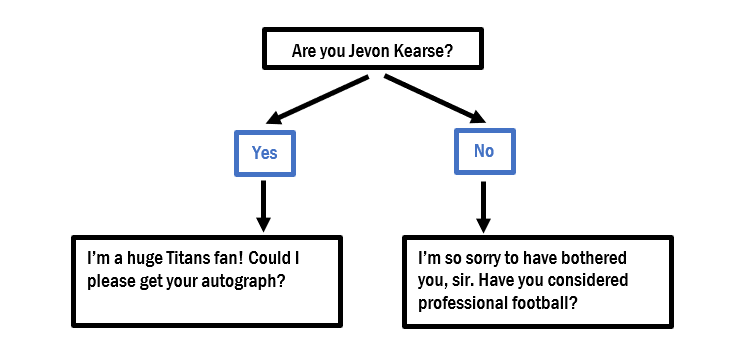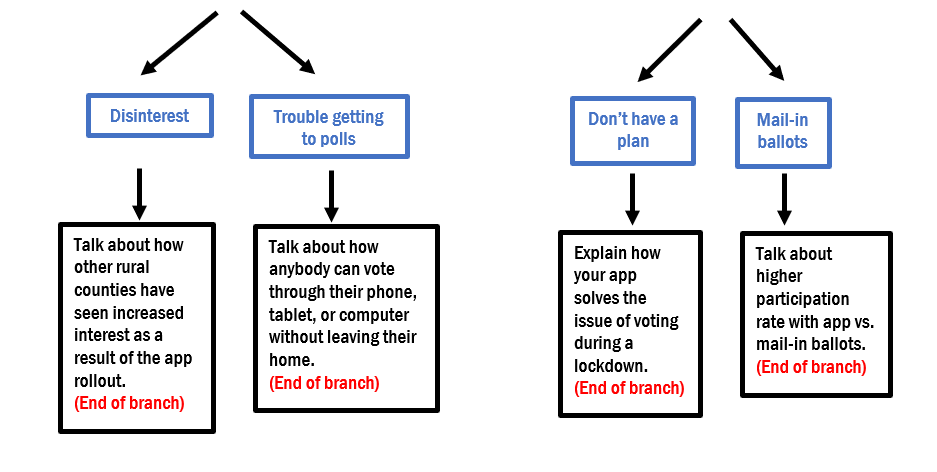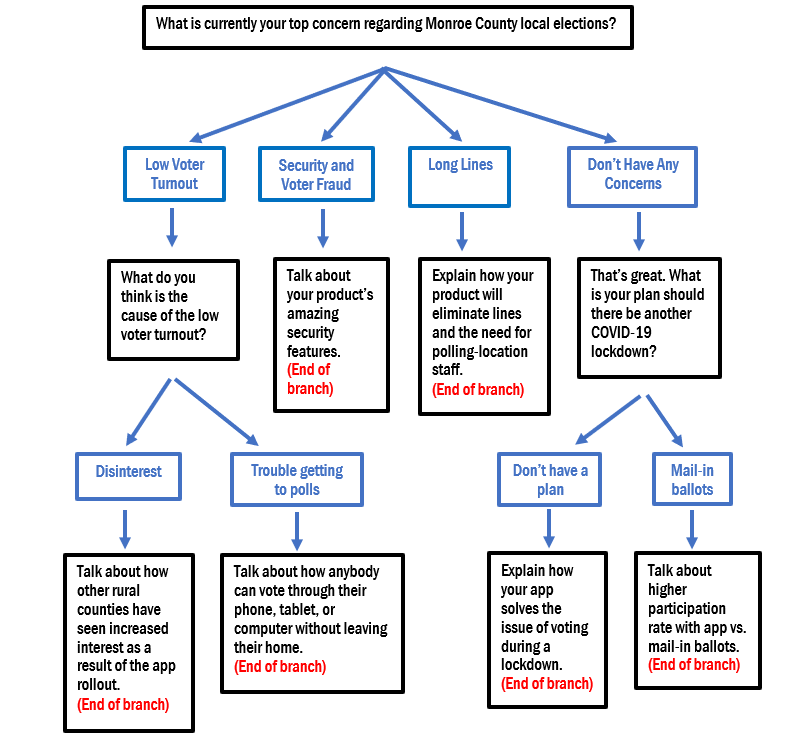Reinforce using the DRIVE framework by asking prepared, open-ended questions that respond to the moment.
November 11, 2020
By Rachel Smith
Once upon a time I was a big Tennessee Titans fan. It’s a long sad story of being from Houston, loving the Oilers, being heartbroken when they left town, and desperately trying to hang onto them. Sigh. Anyway, during my Titan-fandom phase I was on an airplane, and there was a rumor going around that Jevon Kearse (the Titans’ defensive end who still holds the rookie sack record) was up in first class. So, what did I do? I marched myself up to first class.
“Are you Jevon Kearse?” I asked. (Let’s be serious. Who else could it have possibly been? The man is 6’5” and at that time was made of nothing but muscle.)
“Yes,” he replied.
And then? Then I stood there looking at him like a complete and utter moron, smiled, and went back to my seat. I was totally unprepared to respond and had clearly not thought through the entire situation. If I had thought about it beforehand, the game plan would have been as follows:

What you see above would have prepared me for all likely scenarios. I would have been less nervous, and I would have been ready to respond to his answer with my next question. And that, my friends, is a question tree.
We have mentioned in past Maestro blogs how to develop high-quality questions that will help you get the information you need from prospects. Most sales professionals are used to spending time preparing questions and also anticipating questions, whether from a customer or for an upcoming interview.
We’re not as used to anticipating answers, but doing so is one of the most effective ways of preparing yourself to meet with potential clients. Think of your meeting as one of those “choose your own adventure” books. There are several points in time when the way your potential client answers a question will determine which path you end up traveling.
By preparing question trees, it’s like you’ve already read the whole book and know which way all of the choices will lead, so you can navigate to the end without ending up dead. Okay, that’s where the metaphor breaks down, but didn’t you always end up dying in those books? How about this? Question trees allow you enough foresight to navigate to the end of the meeting without your deal being dead.
If you read last week’s blog or have participated in Maestro training, you already know about our DRIVE information-gathering framework. One aspect that makes DRIVE different from other frameworks is that it has a tiered structure. You need to know what date your prospect is driving toward, but also why this date is important. You need to find out why your prospect is doing something, but also what happens if they don’t.
Digging deeper into information through this tiered structure means that, as a sales professional, you need to be thinking beyond your first question to your next. In order to do that, you need to be prepared for the possible range of answers you might get to that initial question. That’s why we teach question trees in tandem with DRIVE.
Developing a question tree is a type of brainstorming activity. Let’s say your company has developed a voting app that you hope will eventually allow citizens to vote for candidates in national, state, and local elections from the comfort of their own home. (All of the examples I thought of had to do with elections. Weird, right?)
Currently, your prospects are small, rural counties with aging populations that have upcoming, off-year, local elections. Next week you have a call with potentially-interested local officials in Monroe County, Wisconsin, and you want to be well-prepared. Your question tree preparation would look something like this:
1. Think about the bold, open-ended question you want to ask. That goes at the top of your question tree. We’ll put it (and any future questions you ask) in black. The entire question should be written out exactly as you’ll say it.

2. Next, you’re going to think about potential answers to your question. These do not need to be written out as someone would say them. Think of them in terms of buckets of answer types. These answers from your prospect (and any of their future responses) will be in blue.

3. For each possible answer, what will be your response? This might be where you talk about a specific product feature, or you might need to ask another question.

4. Take each branch to its logical conclusion. For some first-tier answers the branch will be short, while for others it could potentially branch again.

In the end, you are prepared for nearly all possibilities with a question tree that looks like this:

Developing a question tree is a brainstorming and preparation strategy. It is not meant to be used as a script. Be sure you are listening intently to your prospect and not asking questions that have already been answered.
Last week my refrigerator died, and I heard my husband on the phone with customer service. He explained what had happened, what he had tried in an effort to fix the problem, and that the display was blank. After a brief pause I heard him say, “I can’t tell you what the temperature is on the display because THE DISPLAY IS BLANK.”
I assumed he was interacting with a chatbot. It turns out that he was speaking with an actual human, but she was clearly going through a series of questions and had not listened to what he already said. She was not using a question tree. She had a question list: not the same thing.
Your question trees are going to be quite a bit more complex than the Jevon Kearse example that I started with. “Are you Jevon Kearse,” after all, is a binary question that’s not going to get you the kind of informative response you seek as a sales professional.
Coming up with high-quality, open-ended questions for your prospect, brainstorming possible responses, and preparing appropriate follow-up questions is one of the best ways to prepare for a sales call or upcoming meeting. It ensures that you will get the information you need, be prepared for any situation, and not only keep your deal alive, but get it over the finish line. That’s the “choose your own adventure” ending we’re all hoping for.
Reach out to mastery@maestrogroup.co to plant the seeds for higher sales.
Get the Maestro Mastery Blog, straight to your inbox.